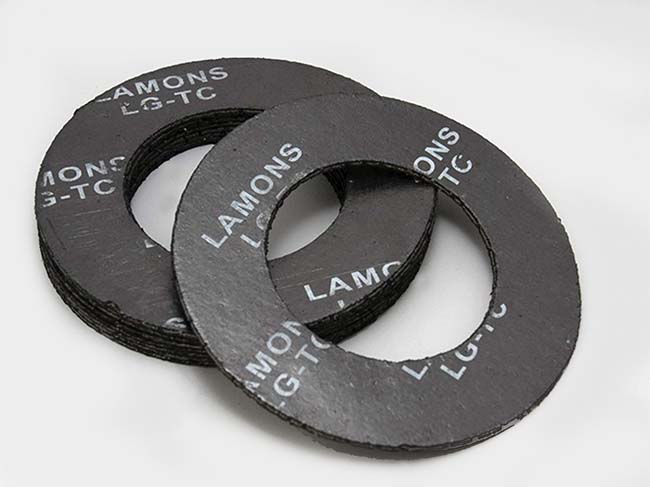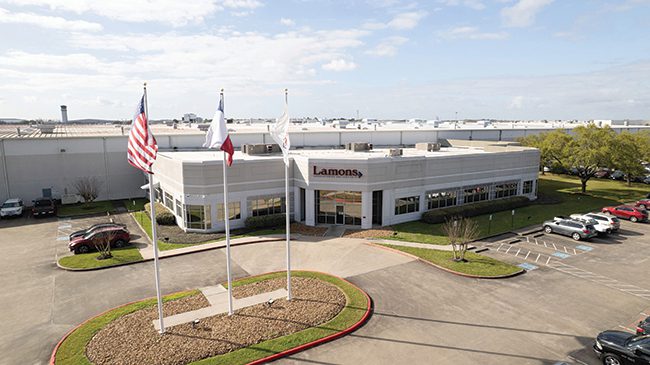Gaskets and Fasteners: What Sets a Supplier Apart?
Credit to Author: Aaron Larson| Date: Wed, 01 Jun 2022 04:10:00 +0000

Gaskets and fasteners are vital to plant reliability and efficiency. While basic nuts, bolts, and gaskets haven’t changed much over the years, some of the materials used in them have evolved and designs have been enhanced in many ways. However, sometimes what really makes the difference between success and failure is if you can get what you need, when you need it.
Gaskets and fasteners have been around long before you and me, and they’re sure to be around long after we’re gone. Some of the first gaskets were made from pieces of rope called oakum, which, I guess you could say, was better than nothing. In the mid-1800s, the development of vulcanization allowed rubber to become a more common gasket material. By the early-1900s, the proliferation in the use of asbestos in products of all types extended to gaskets, as the material was highly resistant to heat, wear, alkalis and acids, as well as having great flexibility—all desirable properties for long-lasting sealing systems.
You won’t find many oakum or asbestos gaskets being installed these days, but rubber is still pretty common, albeit much different from the types used a century ago. Asbestos has actually been banned in 67 countries, according to the International Ban Asbestos Secretariat, including in all Organisation for Economic Co-operation and Development (OECD) countries except Costa Rica, Mexico, and the U.S. Even China has banned asbestos.
After it became widely recognized that asbestos increases the risk of several serious diseases, including asbestosis, mesothelioma, and lung cancer, many materials manufacturers began in earnest to develop alternatives to asbestos. With a wealth of resources behind them, they were largely successful. Today, compressed non-asbestos materials are available that consist of non-asbestos fibers, such as fiberglass or aramid fibers, combined with rubber. This formulation has proven to have very good temperature and pressure performance.
Gasket Types and Materials
There are dozens of different gasket materials available to meet engineering design specifications for almost any power plant system. The following are some of the broad gasket types that exist:
- ■ Closed-cell sponge rubber materials.
- ■ Compressed non-asbestos.
- ■ Cork.
- ■ Electrical insulation.
- ■ EMI/RFI shielding (electromagnetic interference and radio-frequency interference shielding).
- ■ Felt.
- ■ Fiber.
- ■ Flexible graphite (Figure 1).
- ■ Foam.
- ■ High-temperature materials.
- ■ Open-cell sponge rubber materials.
- ■ Plastics.
- ■ Rubber molding compounds.
- ■ Rubber.
 |
1. Flexible graphite gasket properties include resistance to corrosion against a wide variety of acids, alkalis, and salt solutions; organic compounds; and heat transfer fluids, even at high temperatures. Courtesy: Lamons |
Among the common materials used in some of the types listed above are: Butyl, Cellulose, Chomerics, Cloth-Inserted, EPDM (Ethylene Propylene Diene Monomer), Flexitallic, Formex, Grafoil, HDPE (High-Density Polyethylene), Hitex, Hypalon, Latex, LDPE (Low-Density Polyethylene), Mylar, Neoprene, Nitrile, Nomex, Nylon, Phenolic, Polyester, Polyurethane, PTFE (Polytetrafluoroethylene), PVC (Polyvinyl Chloride), Silicone, UHMW (Ultra High Molecular Weight), Urethane, Vinyl, Viton, Wool Felt, and others.
It’s often best to consult with an expert to determine the best gasket material to use in a given application. Several factors must be evaluated to ensure the material chosen is appropriate for the intended purpose. Some of the key considerations are:
- Temperature. What temperature range must it withstand?
- Pressure. What pressure range must it withstand?
- Media. What fluids or materials will it be exposed to? Are they abrasive or corrosive?
- Ultraviolet and ozone exposure. Will it be exposed to sunlight and ozone?
- Product standards. Is it subject to any industry-specific product requirements? Does it need EMI shielding properties?
- Industry standards. Is it subject to any other industry-specific standards?
Material Suppliers
While there are multiple reasons a gasket might need to be replaced, the most common is after a system or component has been disassembled for maintenance. That’s when having a reliable supplier that can provide the gasket you need, when you need it, is critical. One company that’s relatively new to the power industry but has been providing gaskets to the energy industry for 75 years is Lamons. It began distributing gaskets and bolts to the oil, gas, and petrochemical industries in 1947.
Headquartered in Houston, Texas, Lamons has grown into one of the largest privately held gasket, seal, bolt, and hose assembly manufacturers in the world with 21 locations. Lamons main manufacturing facility is in Houston, which is 300,000 square feet, and includes a 64,000-square-foot addition (Figure 2) that was constructed during the COVID pandemic. Additionally, Lamons has a 17,000-square-foot facility in Denver, Colorado, specifically dedicated to the company’s IsoTek sealing and isolation product line.
 |
2. Lamons’ recently constructed a 64,000-square-foot addition at its Houston, Texas, manufacturing plant, which will allow the company to more than double its top line performance by 2026. Courtesy: Lamons |
“We manufacture 78% of everything that we sell worldwide here in Houston,” Marc Roberts, CEO of Lamons, told POWER. “We are not a distributor. We are a direct manufacturer and directly sell to customers. In fact, we currently now sell to distributors.”
Roberts said Lamons is very focused on serving its customers, which is what he feels really sets the company apart from other suppliers. He noted that customers at refineries and petrochemical plants could lose millions of dollars in revenue if a unit has to be kept offline for even a short period of time because it’s waiting for a $200 gasket or a $10 bolt to be delivered. He knows the same is true for power companies.
“What we’ve really focused on is upping our service levels, such that we’re there 24/7, any day of the week, independent of whether it’s a holiday or not—doesn’t matter to us. We make sure that our customers will stay online and that our product is not going to be the impediment as to why they have a downtime issue,” Roberts said.
Lamons also employs a “Focused Factory” concept to ensure the most urgent orders get filled as soon as possible. Roberts said the concept has been used by the automobile industry for decades. What Lamons has done is created a dedicated team that includes production workers, support staff, quality control members, and others required to basically take an order and produce a product that can be shipped in hours. Not every order is handled this way, but a certain percentage of orders come in with must-have-now stipulations, and those requests get this type of royal treatment. Roberts said the Focused Factory allows Lamons to “service the customers when they need it, how they need it, and the way they need it.”
—Aaron Larson is POWER’s executive editor.
The post Gaskets and Fasteners: What Sets a Supplier Apart? appeared first on POWER Magazine.